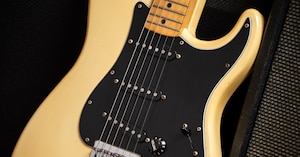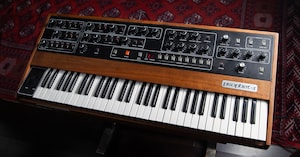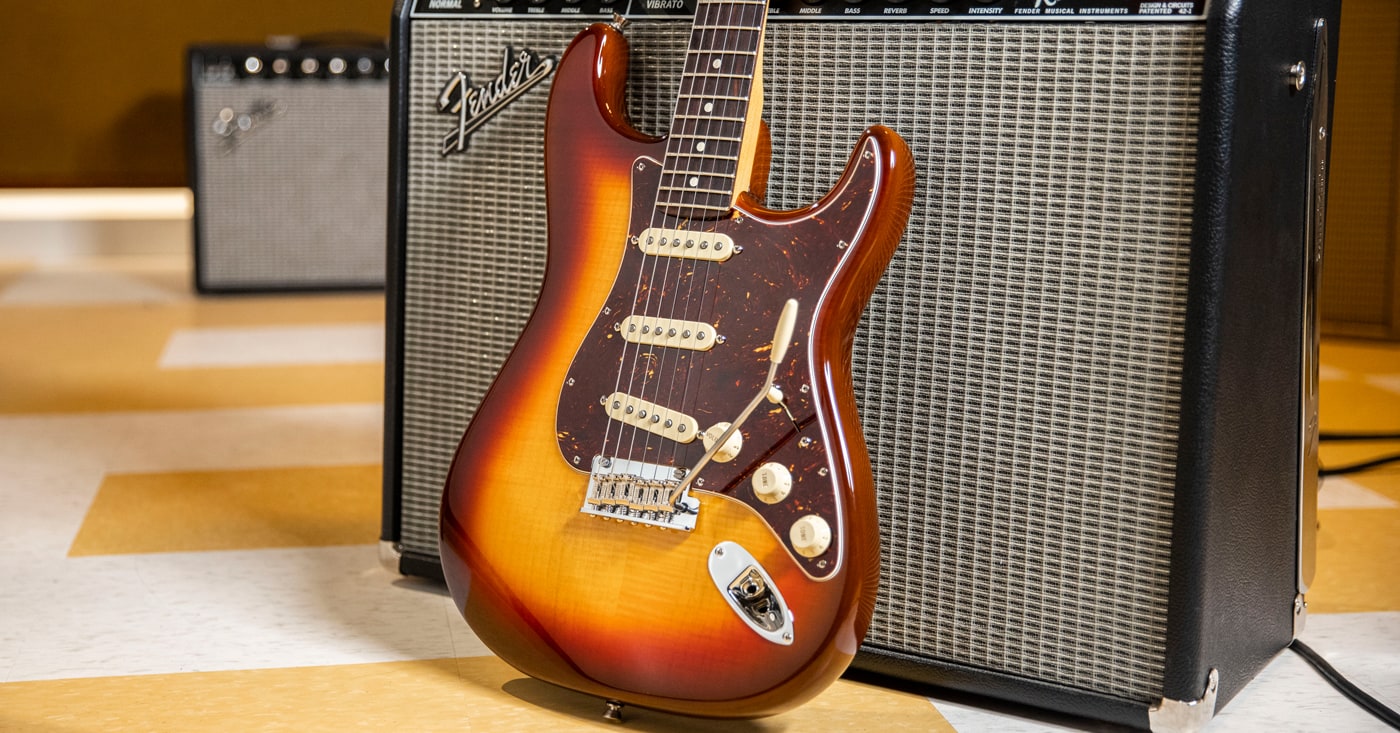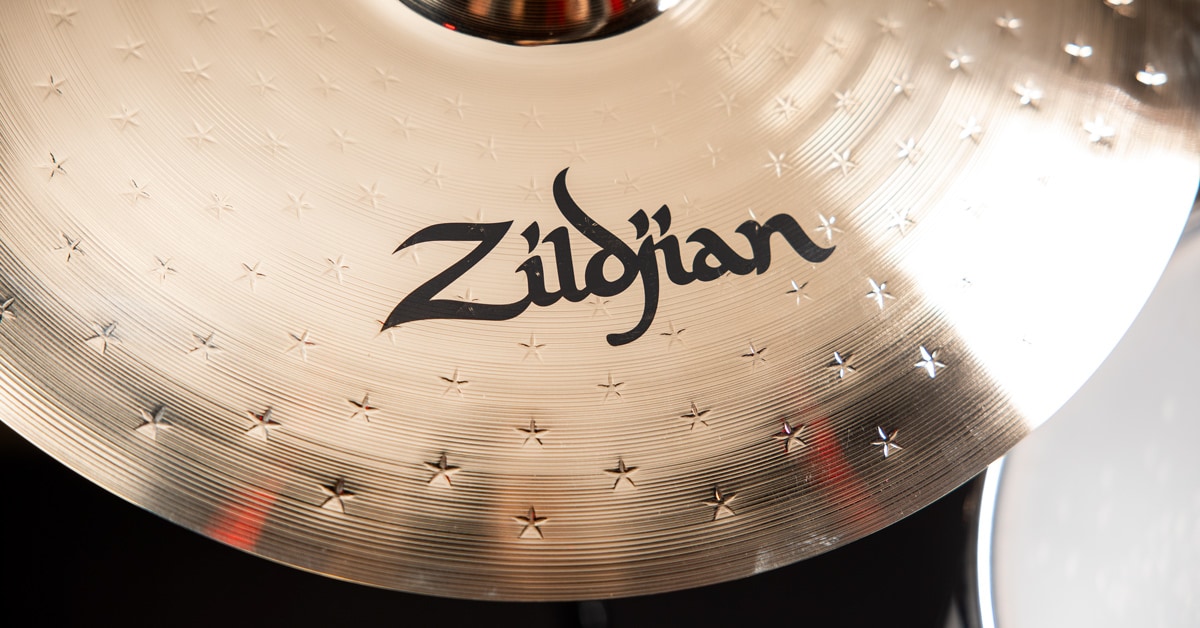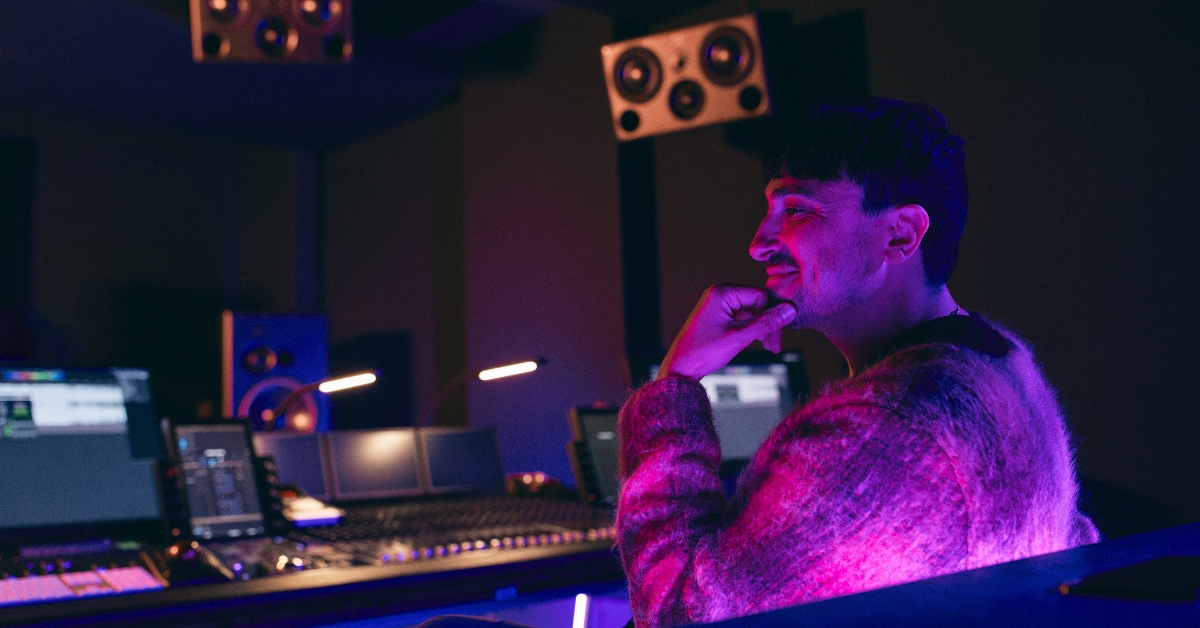(Image provided by Dolby)
Dolby Atmos is an immersive sound format and experience that’s become the standard for pro-level film mixes and is now gaining momentum in the music industry. In this article, we’ll explain what makes Dolby Atmos unique compared to other surround sound formats and what gear you’ll need to mix in Dolby Atmos. We’ll also introduce some of our most popular monitors and controllers recommended by Guitar Center for mixing immersive audio in your studio. As always, our team of experts at Guitar Center Professional are happy to provide a free consultation to help you find the perfect solution for your setup.
What is Dolby Atmos?
Dolby Atmos is an immersive sound format, released by Dolby Laboratories in 2012. It was designed to enhance 7.1 surround systems by using an additional pair of overhead channels and up to 118 “sound objects,” creating a scalable and flexible system. Sound objects can be panned in three dimensions to create a fully immersive listening experience. Sound objects are not bussed or panned like traditional audio, but instead placed as X, Y and Z coordinates. Dolby Atmos simultaneously also supports “audio beds”, which follow the traditional surround sound channel bussing convention plus the overhead stereo pair to make a 7.1.2 bus.
Check out Dolby Atmos for yourself with a free 90-day demo of the Dolby Atmos Production Suite.
Currently used in more than 6,000 movie theaters around the world, Dolby Atmos has become the standard for immersive mixing and professional film scoring. When a film is slated for a theatrical cinema release, you must use a Dolby Certified studio to mix and master the Dolby Atmos audio mix.
More recently, Dolby Atmos has started to see adoption within the music industry with support by a number of streaming services including Apple Music. Many songs are now available in Dolby Atmos, and consumer products like headphones and soundbars are also offering support for Dolby Atmos. Now music listeners can enjoy immersive Dolby Atmos mixes right from their phone with a quick finger tap. With the adoption of Dolby Atmos and Spatial Audio by Apple Music, recording artists and engineers have quickly become incentivized to produce Dolby Atmos mixes in order to stay current and stand out from the crowd. Other music services like Tidal and Amazon Music also offer Dolby Atmos Music support. Unlike theatrical film releases, there is no requirement to use a certified studio for Dolby Atmos Music.
What You Need to Mix in Dolby Atmos
Depending on the medium of the final deliverable, you may need special Dolby Atmos certified hardware to mix and render your audio. If the audio is for a theatrical cinematic release, you’ll need to use a hardware Dolby Atmos Rendering and Mastering Unit (RMU). The Dolby Atmos RMU handles all of the processing for rendering and authoring the final Dolby Atmos file. RMU hardware systems can also perform room calibration and manage speaker configurations. While the most common requirement for the external RMU is a theatrical release, you may also need the rendering and mastering unit for more intensive workflows, like audio for home theater.
All other Dolby Atmos mixes will require either the Dolby Atmos Production Suite or the Dolby Atmos Mastering Suite. The Dolby Atmos Production Suite conveniently runs on the same MacOS computer as your DAW. The Mastering Suite runs on a separate, certified Mac or Windows computer connected via a MADI or Dante interface to your host machine that runs your DAW. The Dolby Atmos Mastering Suite includes all of the features of the Production Suite in addition to advanced controls and features.
If you’re not sure which option is best for you, give the experts at Guitar Center Professional a call for a free consultation.
Which DAWs can you use with Dolby Atmos?
Dolby Atmos offers support for some of the most popular DAW software including Ableton Live, Apple Logic Pro X, Avid Pro Tools and Steinberg Nuendo. Avid Pro Tools Ultimate 2018+ and Steinberg Nuendo both have native integration for Dolby Atmos right out of the box. There’s also a free Dolby Atmos Music Panner plug-in, specifically designed for music workflows, available (macOS only) for download in AAX, AU and VST3 formats.
Recommended Monitoring Solutions for Dolby Atmos
Dolby Atmos supports up to 22 speakers in the home environment, with a minimum requirement of 7.1.4: L, C, R, SL, SR, SBL, SBR, SW and LTF, RTF, LTR, RTR ceiling. A 9.1.6 setup is recommended to deliver a full, optimal listening experience. Dolby Atmos can also work on a 5.1.2 setup, or even headphones (using the binaural renderer built into the Dolby Atmos Production Suite). When mixing with headphones, it’s advised to check your mix on a Dolby Atmos system to ensure it translates accurately.
Our Recommended Main Speakers for Dolby Atmos
As with other studio speaker types, there are a variety of both active and passive speakers that are suitable for Dolby Atmos mixing and mastering.
Meyer Acheron 80/100 (Active)
The Acheron 100 and 80 self-powered two-way speakers deliver full-range, precise coverage for cinema screen sound channels. Aptly named, the 100 model provides 100-degree horizontal coverage for large, wide theaters and rerecording facilities. The 80 offers 80-degree horizontal coverage, perfect for narrower theaters and dub stages. At only 21” deep, both the 80 and 100 are ideal for behind-screen installs.
JBL M2 Master Reference Monitor (Passive)
The M2 Master Reference Monitor is a passive, free-standing, two-way speaker designed to be placed in studio environments that mix for music, cinema and broadcast mediums. It offers an extended frequency response of 20Hz to 40kHz and max SPL of 123dB. The patented low-frequency port design delivers extended bass performance in a small footprint.
Our Recommended Surround Speakers for Dolby Atmos
Surround speakers are typically passive, so they’re easier to install without the need to run power to each individual speaker.
JBL LSR708i and LSR705i (Passive)
The LSR708i and LSR705i are 8” and 5” passive master reference monitors designed to be part of a modular and scalable speaker configuration for complex workflows in post-production. With its larger 8” woofer, the LSR708i reproduces frequencies from 35Hz to 36kHz, while the 5” LSR705i reproduces bass frequencies down to 39Hz. Both the LSR708i and LSR705i support BSS BLU link Networked Audio and Harman HiQnet for easy, centralized control using hardware, software or even a wireless tablet.
Genelec 1032C SAM (Active)
The Genelec 1032C SAM is an active reference monitor that has both analog and AES/EBU inputs, and auto-detects the input signal. With a 10” woofer and 1” tweeter, the 1032C SAM reproduces frequencies down to 40Hz and up to 23kHz. Genelec’s GLM software enables you to configure, tune and daisy-chain multiple 1032Cs.
Neumann KH 80 DSP (Active)
The Neumann KH 80 DSP is a compact, network-controlled powered studio monitor designed for nearfield listening. It features a two-way speaker design, with a 4” woofer and 1” tweeter, and DSP-controlled amplification that’s managed using a network interface from your computer or tablet. This makes a KH 80 surround setup one of the easiest monitoring solutions to customize and configure.
Recommended Subwoofers for Dolby Atmos
Meyer X-800C (Active)
Built specifically for cinema, the X-800C is a 1,240W powered subwoofer with great clarity in the 20 to 200Hz range. With two 18" drivers in an optimally tuned enclosure and sophisticated onboard processing, the X-800C is THX certified to deliver a low-frequency experience that won’t disappoint.
JBL AC118S (Passive)
The AC118S features one 18” low-frequency driver with 3” voice coil in a 3/4” hardwood plywood enclosure. Its design incorporates a large port for high output and extended low-frequency response (from 40Hz to 250Hz) and has multiple attachment points for placement flexibility.
Adam Sub12 (Active)
With a 12”, 300W subwoofer, the Adam Sub12 is perfect for medium control rooms. It’s outfitted with both XLR and RCA connectors, so it’s compatible with virtually any existing audio system. The Sub12 delivers a frequency response of 22 to 150Hz and includes gain and filter controls on its rear panel.
JBL ASB6112 (Passive)
The ASB6112 by JBL utilizes a 12” Differential Drive dual voice-coil driver with a power rating of 1,000W to deliver reliable low-frequency performance, from 35Hz to 1kHz. It’s constructed from 11-ply birch plywood, a 14-gauge steel grille with acoustically transparent foam and includes one NL4 Neutrik Speakon input and one barrier strip terminal.
Recommended Monitor Controllers for Dolby Atmos
JBL Intonato 24 with Remote
The JBL Intonato 24 is a great solution for managing your Dolby Atmos monitoring setup. Connect and control up to 24 individual speakers and route up to 24 analog, digital and networked audio sources. The Intonato 24 offers powerful, intuitive capabilities, such as automated speaker calibration, subwoofer integration with selectable crossover, and custom user profiles so you can save and recall configurations for specific projects. There are multiple ways of controlling the Intonato 24, including via a free application on your Mac, PC or tablet, as well as the optional hardware Intonato Desktop Controller.
Focusrite Red 16Line With Focusrite RedNet R1
The Red 16Line is a very capable audio interface that sports ultra-low latency, two Red Evolution preamps and over 118dB of dynamic range. But most importantly, for use with Dolby Atmos, Red 16Line offers 16 analog outputs that leverage the best D/A conversion Focusrite has to offer. When paired with the RedNet R1, the Red 16Line becomes a powerful centerpiece to any Dolby Atmos mix room. The RedNet R1 is a Dante-enabled controller that delivers an impressive amount of functionality. It supports up to 12 monitor output channels, from mono to 7.1.4 immersive, and up to four fold-down presets for fast switching of different downmixes. The R1 can be powered via Ethernet or with the included DC power supply, and has a variety of other useful features, including talkback, A/B switching, high-fidelity headphone outputs and support for the RedNet Control software.
Avid S4 or S6 With Avid MTRX
By combining the Avid S4 or S6 mixing control surfaces with an Avid MTRX audio interface, you can build a powerful Dolby Atmos workflow that is second to none. Avid offers special configurations of the MTRX that are designed specifically for Dolby Atmos with the ability to route audio to multiple Dante and MADI devices with ease. With one or more DigiLink I/O cards, you can connect an HDX system or a multi-workstation system to a single MTRX interface. Once configured, you can route all playback, stems, rendering and monitoring outputs through one MTRX interface. And since MTRX uses DAD AD/DA converters, you can also use their flexible DADman software application to do a wide range of routing and automation via EUCON and Pro Tools.
Dolby Atmos Mixing Wrap-up
Dolby Atmos is a powerful standard that delivers an immersive audio experience to the masses and is used in more than 6,000 theaters worldwide. A proper Dolby Atmos mixing setup for a film’s theatrical release has very specific requirements, from special monitoring configurations to proprietary hardware rendering systems. Separately, Dolby Atmos Music has been building momentum with its adoption by Apple Music, Tidal and Amazon Music.
By investing in a system that supports Dolby Atmos, you’ll be able to mix using the latest technologies in the audio industry to take your projects to the next level. Furthermore, you’ll also distinguish yourself from other studios that have yet to implement a Dolby Atmos mix setup.
For assistance configuring your Dolby Atmos system, contact our team of studio experts at Guitar Center Professional for a free, no-obligation consultation.


